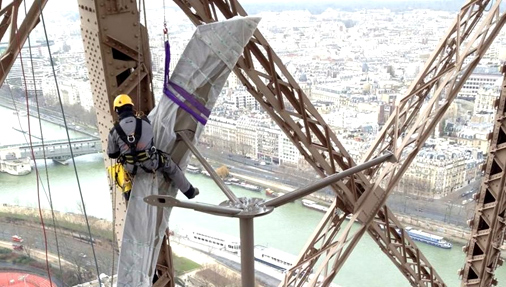Introduction
India is fortunate to be one of the last few countries to experience the terrible effects of Coronavirus Pandemic. China was the first country to face the hazard but being an advanced nation with advanced technology, better medical facilities they implemented strict measures to contain the coronavirus, they managed to get the contagion under control, but failed to control the transmission of pandemic to other nations. There are 22,97,712 infected all over the world currently with 158,202 deaths from Coronavirus Pandemic Covid 19 an extremely contagious and transmissible virus spread through droplets, sneezing or contaminated objects left by infected individuals throughout the world.
Impact of Covid 19 all over the world
Statistics published by John Elfiein on April 12, 2020 confirmed the outbreak of the Coronavirus Pandemic in 210 countries throughout the world. The virus had infected 1,780,684 people worldwide and the number of deaths had totaled 1,08837. The most severely affected countries reported were USA, Italy and Spain with USA having 533,088 cases, Italy with 152,271 cases, Spain with 163027, France 129654 and the UK had crossed 7899 cases. Within a span of a week, there is a huge spurt in the number of cases all over the world, the Times of India the daily newspaper on April 19, 2020 reported that USA witnessed 716,883 infected and 37,659 deaths, Spain with 191,726 infected and 20,043 deaths, Italy with 175925 infected and 23,227 deaths, France with 1,49,146 infected and 19,345 deaths, and the UK with 1,15,300 infected and 15,497 deaths, The numbers are deadly and threatening. USA and Italy imposed a complete lockdown too late to prevent and reduce the transmission of the Covid 19. In Italy it is not just the virus that has killed and still is killing patients, it is the gush of patients that has left the doctors flabbergasted and forced hospitals to decide who they should save and who they should ignore and allow to die unattended. The list of countries reporting Covid 19 outbreaks is growing daily. 185 countries all over the world are facing the threat and no region can claim to be immune from the Pandemic. Lakhs of people all over the world have died and many more are fighting for their lives in hospitals.
Impact of Covid 19 in India
According to the Times of India, the daily newspaper Covid 19 outbreak in India touched two grim milestones on Sunday April 19, 2020 with the number of cases crossing 15,712 and death toll going beyond 525, recording highest single day rise in numbers at 1266 on Saturday April 18th, 2020, Delhi reported a huge jump with 186 new cases, Maharashtra having 328 new cases, Gujarat with 280 and Rajasthan 122 new cases, UP with 71 and Tamil Nadu 77. Doctors and hospitals on a daily basis have been dealing with a huge gush of Covid 19 patients, there are patients testing positive, there are patients who need to be hospitalized, there are those who require ICU care and ventilators. With limited resources available healthcare units have been struggling to cope and respond to the outbreak.
Coronavirus Pandemic Covid 19: its effect on human mind
The enormity and eccentricity of this coronavirus pandemic has left us bewildered and panic stricken. Staying in a lockdown for almost a month we are confronted with a whirlwind of alternating feelings. Its magnitude and atrociousness has provoked myriad responses and emotional reactions including fear worry, grief and cohesion. On the one hand I feel fortunate enough to live in a pleasant home with a space that gives me sunlight and peace; on the other hand this confinement has evoked a sense of being limited. The coronavirus crisis has given us an opportunity to think about others, feel connected with others and more importantly become aware that everyone on Earth is exposed to this danger. Time has given us the opportunity to empathize and identify with people who are less fortunate.
There are many who share a cramped overcrowded single room with others, there are many without a proper job. There are thousands of urban poor, daily wage earners and migrant workers who have been left stranded are desperately wishing to go back to their work. There are those who live in slums or pavements, many who are homeless. There are those who have more than two children to take care of, feeding them keeping them engaged. People who are domestic help, daily workers or laborers in factories or working at construction sites are now dependent on others for their basic meals and rations. These less privileged cut off from social and economic protections are facing terrible consequences. For these people who are experiencing social distress and for people like us, staying at home has become a compulsory step to protect one another from the deadly corona virus.
Coronavirus Pandemic Covid 19: An Analysis
Human race is confronted with the mortal danger of being perished. Covid 19 has treated the rich and the poor, the privileged and less privileged on equal basis. The corona virus disaster is carrying with it a potential threat to the entire global population and at the same time is teaching us a lesson to get united. Each individual has the capacity to harm or safeguard the other. The wellbeing and safety of all depends on the extent to which each individual becomes aware of his/her inescapable responsibility to help the other. Boris Johnson an affluent world leader and any insignificant powerless person both have the power to make a difference and bring about a change. The coronavirus crisis is an imperative to promote global solidarity based on mutual help, interdependence and fundamental equality of all human beings. Equality and dignity of every member of human race should be recognized and guaranteed, the relationship between people, between nature and human, between human and the ecosystem should be re- established and society should be rejuvenated and renewed.


















